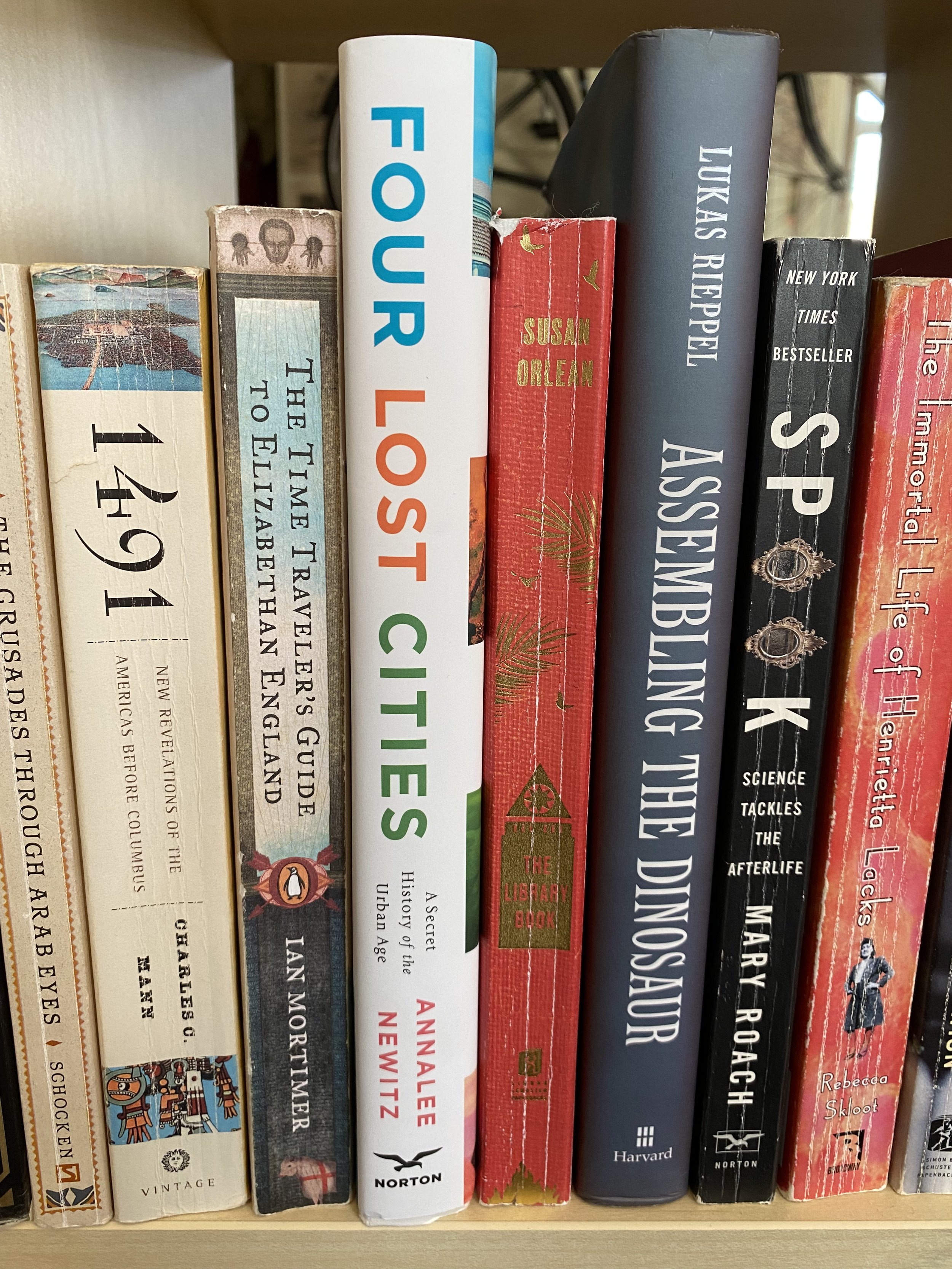Interested in a spoiler free summary? Check out my Annotation of this book.
Review
Explore four great cities of human civilization that for present-day humans are often lost to the past. Part travelogue, part history, part archaeological dig, this book weaves together facts and science technique to create a rich history of human civilizations.
Looking at the cities of Çatalhöyük (Central Turkey), Pompeii (Itlay), Angkor (Cambodia), and Cahokia (North America) and their past inhabitants, Newitz considers how these cities came to be and why they were eventually lost to time. Readers will learn about the earliest moments of human settlement, climate and geological changes that effect human ways of life, as well as the often deliberate abandonment that led to the ultimate destruction of these places. Readers will also explore what it means for a civilization to be lost. Author Annalee Newitz’s journalistic style helps build a story that is as informative as it is fascinating. In this journey between past and present civilizations readers will find an enjoyable and relatable history.
Personal Thoughts
WARNING: May contain spoilers
I know Annalee Newitz through their science fiction writing and their podcast, with Charlie Jane Anders, Our Opinions are Correct. I discovered Four Lost Cities through a virtual local book event and was so captivated about the discussion of the history of Çatalhöyük that I immediately signed up for the other three events on the book “tour,” each featuring a different city from the volume. After learning about Pompeii from the second event I was sold and purchased the book for myself. While the story Newitz crafts doesn’t flow as quickly or smoothly as Tamim Ansari’s The Invention of Yesterday, this is mainly because it contains more hard facts thus providing more learning opportunities and a slower pace. Overall I found myself consistently amused and intrigued by each new city visited. I came away from the book feeling like I had learned more about not only the cities but also about how and by whom history is told.
Final resting place: In the Non-Fiction section of my personal library between The Time Traveler’s Guide to Elizabethan England and The Library Book.
